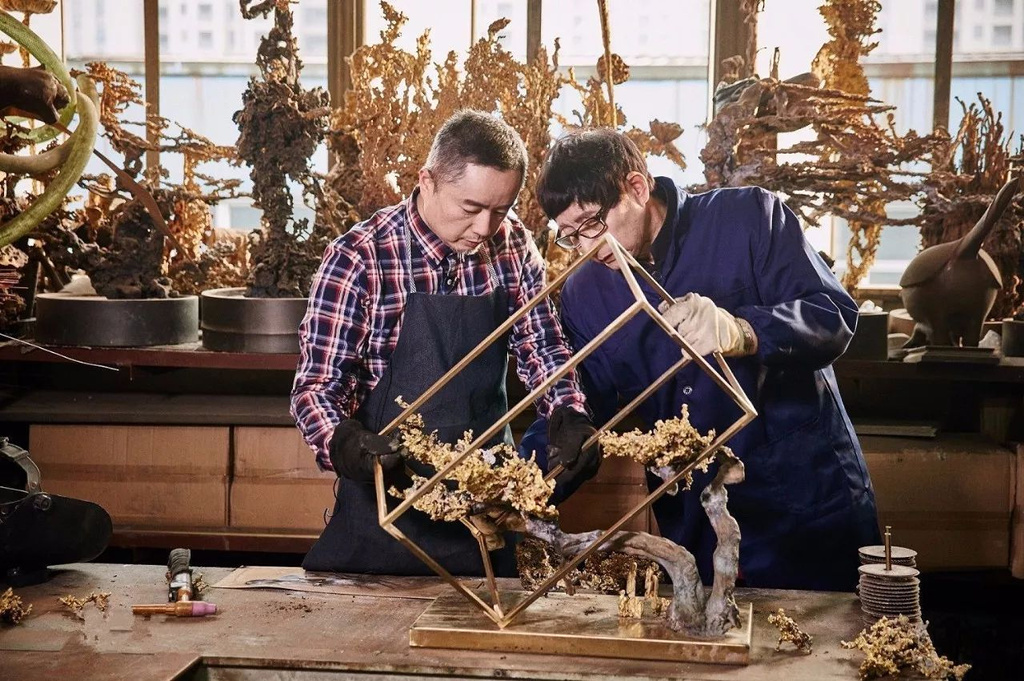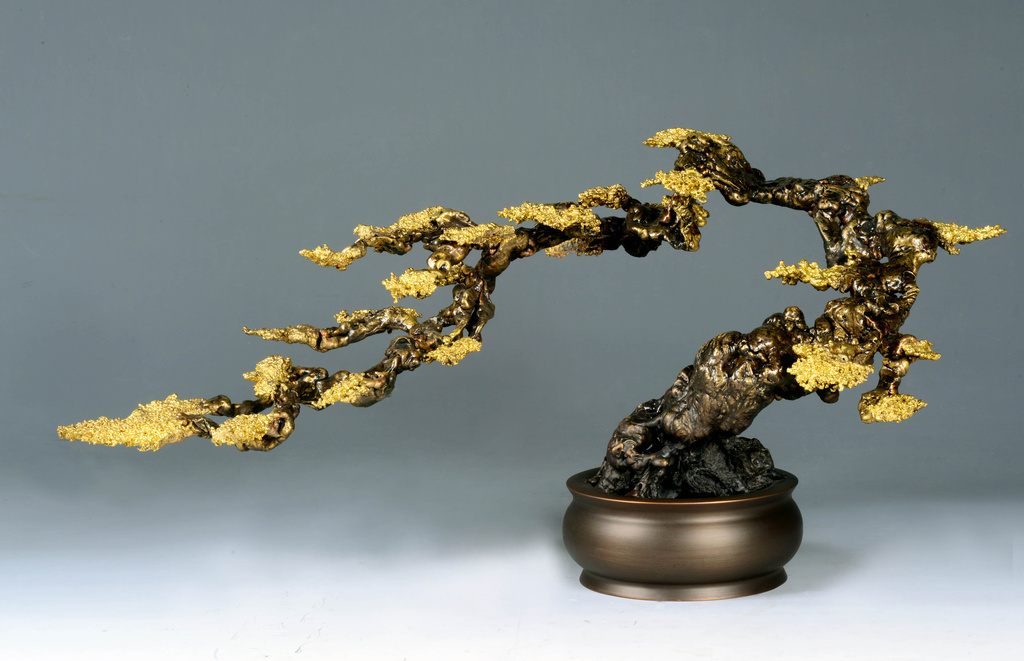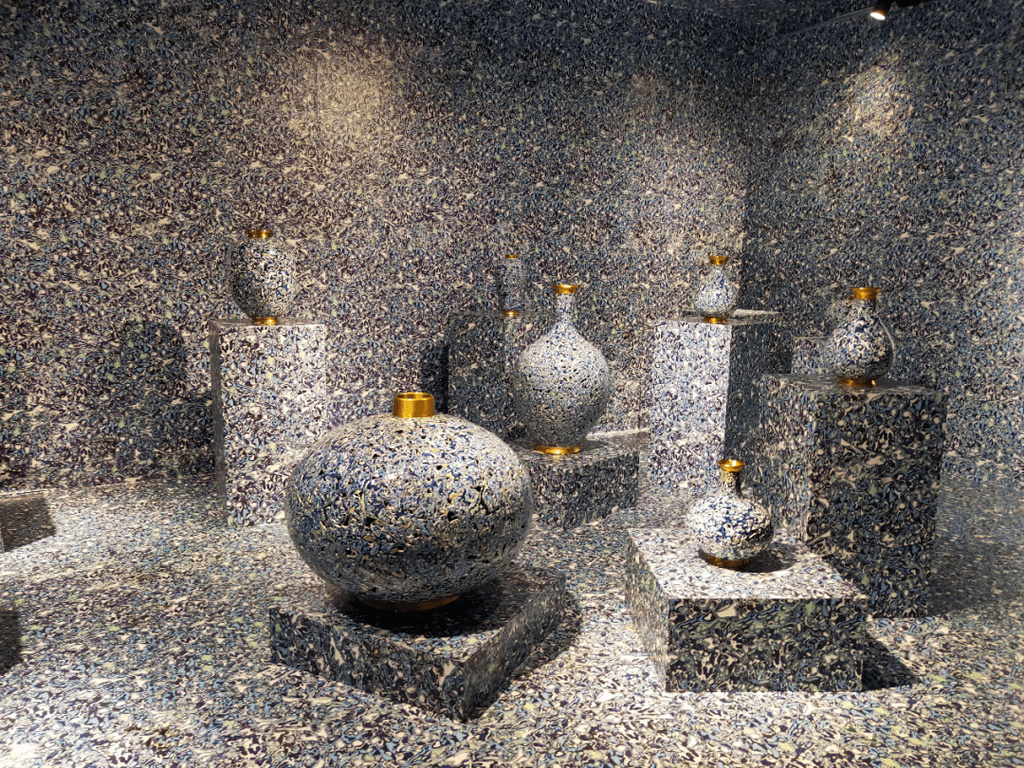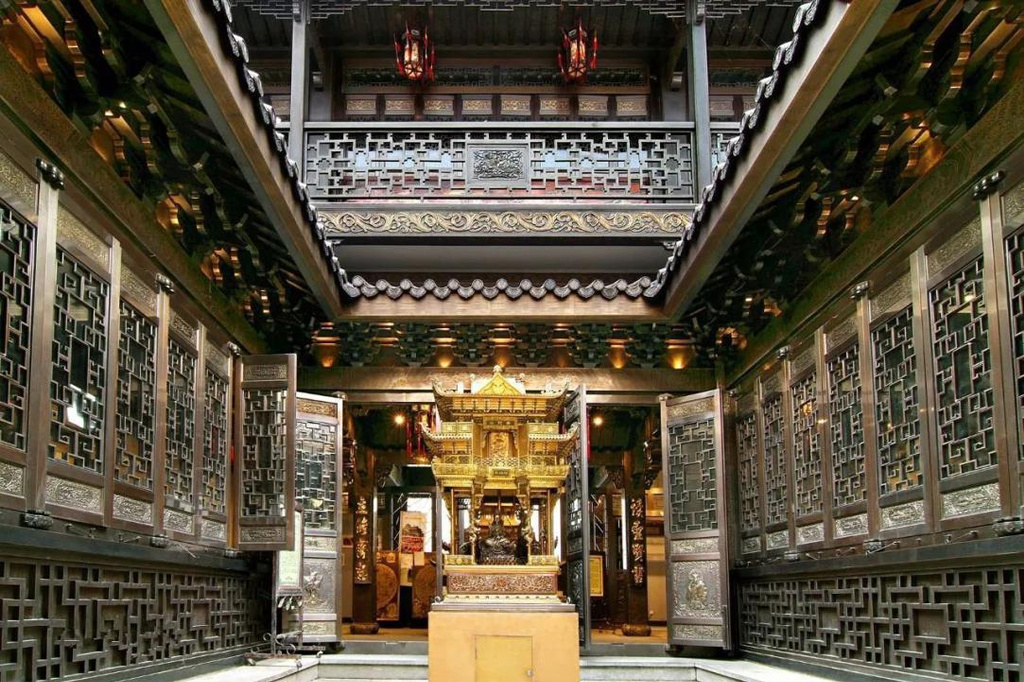Shuai Shao writes about a Chinese master of copper art who combines innovation, dedication and skill.
After the age of forty, Zhu Bingren decided to start from scratch and pick up his family hammer again. Beginning with the first bronze signboard, the first bronze door, the first bronze painting, the first bronze temple, the first piece of molten bronze artwork. In this way, he not only “clothed” the Leifeng Pagoda in Hangzhou in bronze and built over a hundred copper buildings at home and abroad, but he was also known as “the founder of contemporary copper architecture in China”. Zhu Bingren was the first artist to create the “mouldless and controllable” bronze art method. His works have been collected by the National Museum, the Ministry of Culture and Tourism, the Singapore Chinese Cultural Centre, etc. He combined his talents in poetry, calligraphy, painting, printing and bronze and created a large part of his life, leading Chinese bronze culture to its peak.
Zhu Bingren, born in 1944, is a fourth-generation heir of the “Zhu Copper Art” in Zhejiang Province, a master of Chinese arts and crafts. He is the only inheritor of the “copper carving technique” of the National Intangible Cultural Heritage and is known as a titan of copper carving.
More than 140 years ago, Shaoxing was famous for its “Street of copper shops”. Zhu’s ancestors opened a local copper shop. A Shaoxing proverb, “A daughter’s Dowry, Zhufu’s work”, praises the Zhu family’s copper art. Due to the war and other factors, Zhu Deyuan, the third generation of the Zhu family’s copper shop, moved to Hangzhou with his family and founded the first private calligraphy and painting association in China. It was not until the 1980s, when the winds of reform blew through China, that Zhu and his team began to revive the “Zhu copper art” and created a new copper art business.
On 25 May 2006, a sudden fire broke out near the end of the renovation work of the Changzhou Tianning Pagoda. The pagoda’s integral structures remained intact during the blaze, while the eaves of the first floor were burnt. The fire melted most of the copper tiles. However, Zhu Bingren accidentally discovered that the melted copper flowed freely on the ground in the heat, becoming copper beads and molten copper crystals in various poses.
“There is no shortage of beauty, but a lack of discovery”
The free-flowing form of molten copper triggered a new artistic inspiration for Zhu Binren. He says: “Since the Bronze Age, copper casting has required moulds; this ‘mouldless yet controllable melting and casting process’ frees copper completely from moulds and gives copper ‘freedom’. This is the perfect pairing of the artist’s internal and external factors at the right time and the wise insight from Zhu, which can be explained by “there is no shortage of beauty, but a lack of discovery”.
In 2006, Zhu Bingren pioneered the art of molten bronze, combining traditional culture with contemporary art and creating a new category of bronze art worldwide. After the birth of molten bronze art, Zhu Bingren drew on the techniques of Wucai, Famille rose, and pastel Famille rose to create a new process called ‘Gengcai 庚彩’ on molten bronze, making the plain bronze glow with colour and splendour.
“Gengcai 庚彩” is a breakthrough in the combination of molten copper art and colours and is the first of its kind to be applied to controllable yet smoothly solidified bronze artworks. By now, Zhu had perfected the art of molten bronze, and Zhu’s influence formed the new school of ‘molten realism’. The bronze casting culture, which has been in place for thousands of years, was turned upside down.
Mr Zhu Bingren is skilled at locating and researching traditional bronze sculpture art. He combines the essence of his family’s century-old skills, breaks the conventional method of bronze sculpturing, and summarizes eight secret mastery of the Zhu family’s bronze art: “calligraphy, painting, engraving, carving, forging and casting.” These six aspects have created a new future in the development of bronze sculpture.
A great skill must have an excellent successor, and Zhu began training his son Zhu Junmin to become the fifth generation successor of Zhu’s bronze art a long time ago.
Having been in the business for over twenty years, Zhu Junmin has not only obsessively developed more than a thousand products but also helped his father co-organise the “Zhu Bingren Bronze Art Museum”—the Jiangnan Bronze House, the only bronze art mansion in China and the world.
In his 70s, Zhu still contributes his best to developing copper culture and realising the ideal of “bringing copper back into the homes of ordinary people”.
He has created the “Zhu Bingren—Copper” brand, which is the culmination of centuries of skill and has a modern and practical style. With the concept of “copper—also part of life,” traditional copper culture is interpreted through modern aesthetics and truly returned to thousands of households.
- Zhu’s Bronze Mansion
- Zhu’s Bronze Mansion
Reference
茶语市集, 2017. 市集丨朱炳仁:铜雕界泰斗,中国当代铜建筑之父(第42位大师登陆茶语市集)_铜艺–茶语网,当代茶文化推广者. [online] Chayu.com






